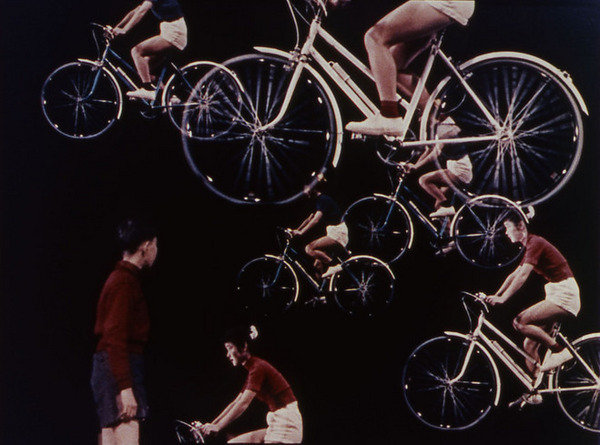Jikken kobo
dal 8/9/2011 al 28/10/2011
Segnalato da
8/9/2011
Jikken kobo
Betonsalon, Paris
The exhibition will present artworks, films, slide shows, documents and photographs relating to the activities of the collective. Protean personal works such as a mobile by Shozo Kitadai, a vitrine by Katsuhiro Yamaguchi and lithographs by Hideko Fukushima will enrich understanding of their work. Part of the correspondence between Kuniharu Akiyama, a member of The Jikken Kobo and John Cage will be exhibited, emblematic of the numerous exchanges that the group was able to engage with various leading figures of the experimental music scene.

curated by Mélanie Mermod
The Jikken Kobo (実験工房Experimental Workshop) was a collective which included visual artists, composers, photographers, set designers, a poet and music critic, a lighting designer, a pianist and an engineer. Active from 1951 to 1958 in Tokyo, the Experimental Workshop created atypical forms of performing art such as ballets, recitals and environmental art, proposing a transdisciplinary vision, focusing on the issue of collaborative work, experimentation with new exhibition formats and a “sensory” experience of art. Through the multiple collaborations of this collective, a picture of an extremely rich Japenese artistic scene of the 1950s has emerged, which nonetheless was mostly eclipsed following the « discovery » of Gutai bijutsu kyokai (Association of Concrete Art) by Michel Tapié during his trip to Japan in 1957. Up until the 1990s, the Jikken Kobo, as was the case with many experimental forms from the 1950s, attracted little attention from historians of Japanese art and to this day remains little known.
On 24th November 1951, the Jikken Kobo presented its first collective work, a ballet entitled “The Joy of Life”, created to mark the first Pablo Picasso retrospective in Tokyo. Sixty years later, Bétonsalon presents research initiated by this transdisciplinary Japanese collective, whose experiments and practice relating to the questions of arts’ synthesis, of the spectator’s experience or of new technologies, largely still remain to be studied. It seems necessary today to offer a wide perspective on the activities of the members of the Jikken Kobo by examining their links to other collectives and artists in Japan, in France and abroad.
The exhibition will present artworks, films, slide shows, documents and photographs relating to the activities of the collective. Protean personal works such as a mobile by Shozo Kitadai, a vitrine by Katsuhiro Yamaguchi and lithographs by Hideko Fukushima will enrich understanding of their work. Part of the correspondence between Kuniharu Akiyama, a member of The Jikken Kobo and John Cage will be exhibited, emblematic of the numerous exchanges that the group was able to engage with various leading figures of the experimental music scene. Among the forms of presentation that the members of the Jikken Kobo invented, three “Autoslides” (the first ever example of an audio slideshow) will be presented, made in 1953 and then re-digitised in 1986 by Yamaguchi Katsuhiro. These various artefacts, borrowed from public and private collections in Japan, will serve to demonstrate the diverse displays used for exhibitions, ballets, music recitals and poetry readings which were created by the Experimental Workshop.
Opening on Tuesday 8th September from 6pm
Performance "Be a Speaker. So be it..." at 8pm by Ei Arakawa, Sergei Tcherepin, Gela Patashuri
Betonsalon
Esplanade des Grands Moulins - Rez-de-Chaussee de la Halle aux Farines 47-51 - Paris



